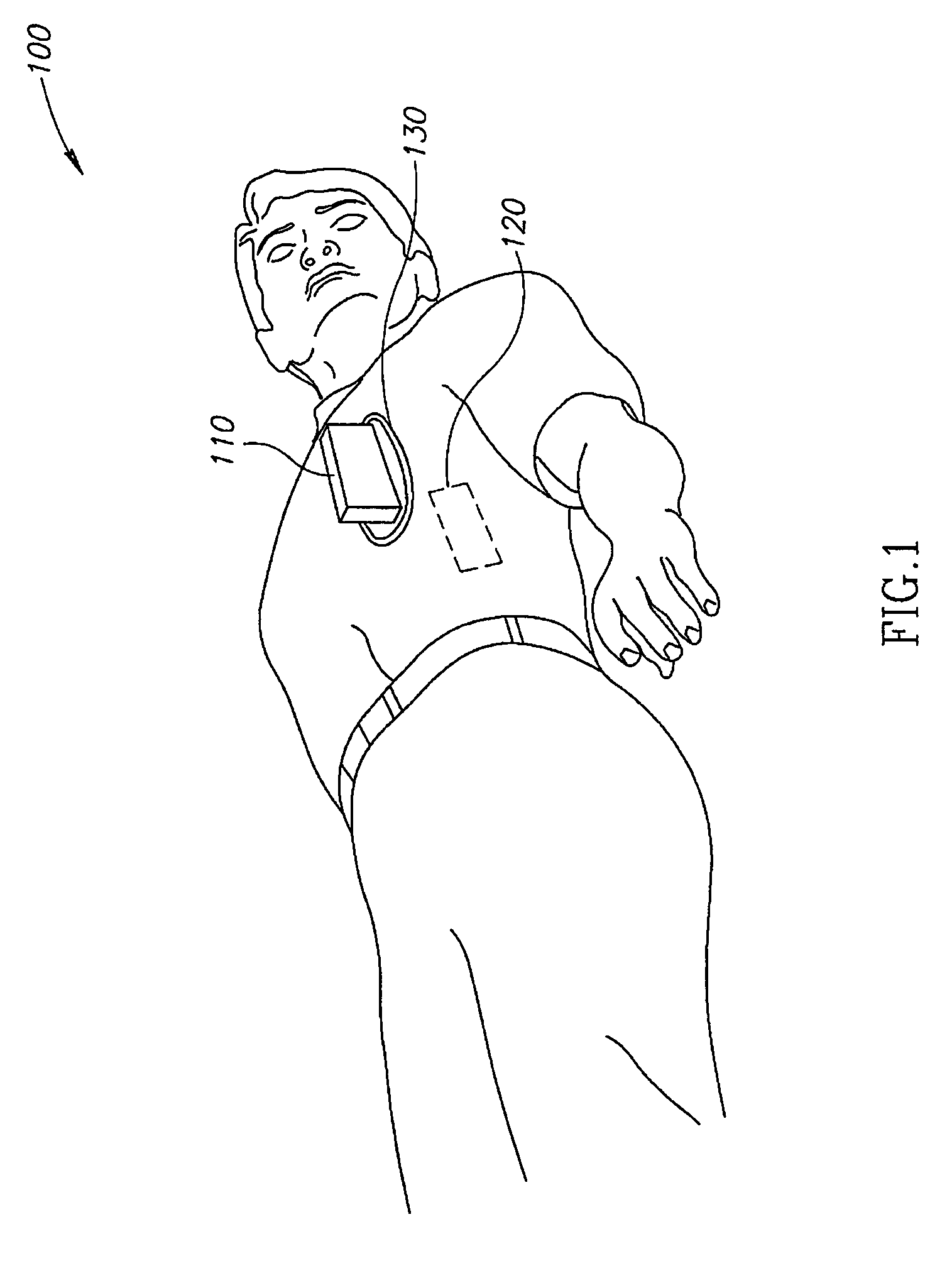Transcutaneous charging device
a charging device and implantable technology, applied in electrotherapy, transportation and packaging, therapy, etc., can solve the problems of affecting the safety of patients, the implant may heat up faster than the surrounding tissue, and damage the surrounding tissue, so as to speed up the charging process and enhance the safety of patients
- Summary
- Abstract
- Description
- Claims
- Application Information
AI Technical Summary
Benefits of technology
Problems solved by technology
Method used
Image
Examples
Embodiment Construction
[0058]FIG. 1 is a schematic illustration of a transcutaneous charge system 100 comprising a charger 110 and an implant 120, for example a pacemaker, deployed according to an exemplary embodiment of the invention. Typically, implant 120 is implanted in a patient during a medical operation. In an exemplary embodiment of the invention, charger 110 is placed on the patient's skin facing implant 120 in order to transcutaneously recharge a power source in implant 120.
[0059]In an exemplary embodiment of the invention, charger 110 is placed on the skin in a location as close as possible to implant 120. In some embodiments of the invention, a separation is placed between charger 110 and the skin, for example a piece of material or a towel. The separation makes the touch of the charger more comfortable and protects the patient from heat in the charger. Optionally, a cooled pad 130 (e.g. a cooled water pad) is placed between the skin and charger 110 in order to alleviate the effect of heating ...
PUM
 Login to View More
Login to View More Abstract
Description
Claims
Application Information
 Login to View More
Login to View More - R&D
- Intellectual Property
- Life Sciences
- Materials
- Tech Scout
- Unparalleled Data Quality
- Higher Quality Content
- 60% Fewer Hallucinations
Browse by: Latest US Patents, China's latest patents, Technical Efficacy Thesaurus, Application Domain, Technology Topic, Popular Technical Reports.
© 2025 PatSnap. All rights reserved.Legal|Privacy policy|Modern Slavery Act Transparency Statement|Sitemap|About US| Contact US: help@patsnap.com



